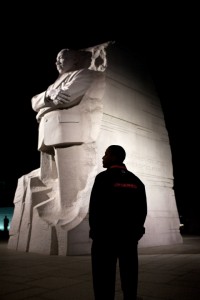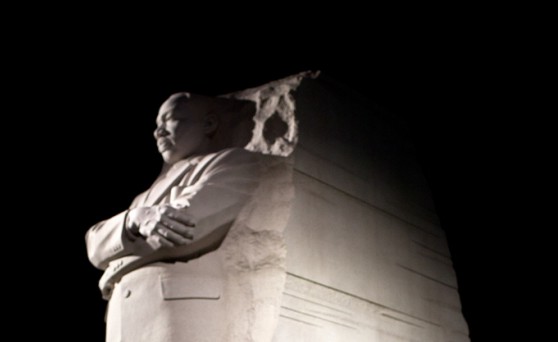As Black History Month comes to a close, we are all reminded of its significance. Originally Black History Week—marking the birthdays of Abraham Lincoln and renown abolitionist Frederick Douglass—Americans have both rejoiced and expressed their disappointment in officially recognizing the long and tumultuous role of Blacks in the United States. Gerald Ford asked Americans to “seize the opportunity to honor the too-often neglected accomplishments of Black Americans in every area of endeavor throughout our history.” Morgan Freeman, on the other hand, stated, “I don’t want a black history month. Black history is American history.”
This debate arises not because of contrasting views held by a White President and a prominent African American actor. This debate is instead about how to remember the violence and rampant racism, but later brilliant liberation and rise of African Americans. Should we focus on slavery, on Jim Crow, and on Emmett Till? Or should we focus on W.E.B. DuBois, on the Civil Rights Acts of the 1960s, and—of course—on Martin Luther King, Jr.?
Considering the role of Black History Month in schools, in the media, in governmental recognition, and at home, it is simply too painful and challenging for us to focus on the awful realities that African Americans faced for so long. So we ignore the institutions and the violence to focus instead on the mere fact that we cherish equality today (at least in our laws). This, of course, distorts reality to no end and ruins the whole point of Black History Month. If Black History Month was created to remember everything that Blacks have faced and overcome in this country, then it should focus on everything that Blacks have faced and overcome in this country. Period. Just because it is hard for elementary school students to face the facts does not mean we should condone twisting those facts. Let them grow up and hear the truth—don’t give them false impressions.
The problem, though, is that most adults have wrong impressions about Black history, specifically about the Civil Rights Movement and the role of MLK.
§

A memorial to King, a memorial to King’s movement, or something else?
Since its dedication in October 2011, the Martin Luther King, Jr. Memorial in Washington, DC, has been the subject of several debates—debates over the demeanor of King in his statue, debates over what the memorial represents, and the list goes on. What is most important, though, is what the memorial claims it is: a memorial for King. This claim, in tandem with the various challenges to it, speaks a great deal about the man who spoke at the dedication ceremony (President Obama), about King during his lifetime, and about today’s perceptions—about the confluence of Obama and King. Unfortunately, what the memorial speaks of collectively does not mesh well with the full histories of King and the Civil Rights Movement.
In his speech at the dedication ceremony, President Obama recognized and paid tribute to an undeniable link between him and King. He noted, “It is right that we honor that march [the March on Washington in 1963], that we lift up Dr. King’s ‘I Have a Dream’ speech—for without that shining moment, without Dr. King’s glorious words, we might not have had the courage to come as far as we have.”[i] Obama notes that the courage necessary to reach today’s recognition of civil rights came not just from King but from others, too—from all who were involved in the movement, both before and after King. Obama also alludes to the idea that without King and the movement he shaped, there would be no President Obama (and probably no former Senator Obama, either). What the memorial says about King, though, is undoubtedly more relevant.
The memorial characterizes King both as a fearless leader and spearhead for civil rights and equality, and as a man of political prowess that is worthy of physical homage in an area surrounded by memorials of past presidents. An undeniable leader and visionary, King needed no introduction by the time of his death. He was the de facto leader of the American Civil Rights Movement (at least for those on the outside looking in); he was a brilliant orator whose words, said his laywer and friend Clarence Jones, would leave a “signature cadence inside [one’s] own skull”; and he was the brainchild of unique strategy, commitment, and outspokenness that brought change to America.[ii] His delivery of the “I Have a Dream” speech captivated the country and brought civil rights to the national spotlight, highlighting his willingness to appeal to both militancy and hope. Earlier that year, his tactic to use children for nonviolent direct action in Birmingham, AL, incorporated politics, unrest, and civil rights together in a highly successful campaign to garner presidential recognition and national attention.
Martin Luther King, Jr. was undoubtedly a fearless and driven leader, and his memorial on the National Mall serves as a reminder of this. King was also, however, a man of peace, nonviolence, and social action—a kindhearted political figure deserving of a statue in Washington. In his famous “A Time to Break Silence” speech on April 1967, King spoke openly against the war in Vietnam, alienating his important political link to President Lyndon B. Johnson and adhering closely to his moral belief that violence is wrong.[iii] King admitted, “I come to this magnificent house of worship tonight because my conscience leaves me no other choice. […] I found myself in full accord when I read […]: ‘A time comes when silence is betrayal.’”[iv] His adherence to nonviolent movements, inspired by Bayard Rustin and Mahatma Gandhi, portrayed him as a visionary in touch with his ethics, and he brilliantly used the tactic both to invoke public sympathy and apply pressure on the federal government. (Clarence Jones recalls President Franklin D. Roosevelt’s challenge to King to “make” him effect a change on civil rights.)[v] His choice to consider the right path instead of the path that granted him political concessions underscores his status as a celebrated American, especially when violence would have brought about national attention much faster. Indeed, his memorial that overlooks the Potomac and Tidal Basin pays tribute to everything that made King, King. It speaks to the reality that King was and is an American hero, and—the typographical errors on the memorial notwithstanding—it remembers and pays respects to him accordingly.
Perhaps most importantly, the memorial also speaks to today, and to today’s image of King. Unfortunately, in contrast to what it speaks of King during his life, it speaks of a misrepresentation of the Civil Rights Movement that has plagued American culture, media, and society following King’s death. King was the undeniable leader of a movement to secure greater civil rights and equality, but the emphasis placed on him today—often a near centrality of focus—creates a commonly distorted history of the movement. This distortion manifests itself in several different respects, including the misperceptions that King was the center of all civil rights movements, and that the movement in its entirety is no longer active today (i.e., that the movement died with King, and that the government has granted all Americans the demands of the movement). First, while the “I Have a Dream” speech was King’s oratory centerpiece (especially for White America), it was also, by most accounts, not his greatest speech—he borrowed the “I have a dream” part from one of his earlier sermons.[vi] Beyond this, as historian Charles Payne notes, “Placing so much emphasis on national leadership and national institutions minimizes the importance of local struggle and makes it difficult to appreciate the role ‘ordinary’ people played in changing the country […].”[vii] King was indeed the founding President of the Southern Christian Leadership Conference (SCLC). He was also the de facto leader of the fight for civil rights at the national level, but hundreds of other leaders and citizens fought for equality at the local levels, which this monument indeed undermines by supporting a “Great Man” representation of King.[viii] Finally, racial injustice continues today, and inequality between racial, sexual, and socioeconomic strata continues too. The importance of the Civil Rights Movement is not that it successfully brought about an end to injustice and inequality in their entireties but rather that it brought about the recognition of need for them to end through an entirely new understanding. Society, culture, and media often misrepresent this idea, and, as a result, many Americans misunderstand the role of King in the Civil Rights Movement.
The memorial, in the words of President Obama, indeed marks King’s “return to the National Mall”; however, it marks the return of King in two very distinct eras—the one of his life, and the one of his legacy.[ix] While these eras are united in some respects, they are also deeply contrasting images of perception and reality.
§
[i] “Full text: President Obama’s speech at MLK Memorial – The Washington Post.” The Washington Post. http://www.washingtonpost.com/lifestyle/style/full-text-president-obamas-speech-at-mlk-memorial/2011/10/16/gIQAkbl3oL_story.html (accessed February 22, 2013).
[ii] Jones, Clarence B., and Stuart Connelly. “Wednesday.” In Behind the Dream: The Making of the Speech That Transformed a Nation. New York: Palgrave MacMillan, 2011. 117.
[iii] King, Martin Luther Jr., “Beyond Vietnam: A Time to Break Silence” (speech, Riverside Church, New York, NY, April 4, 1967), American Rhetoric, http://www.americanrhetoric.com/speeches/mlkatimetobreaksilence.htm.
[iv] Ibid.
[v] Jones, Clarence B., and Stuart Connelly. “Behind the Dream.” In Behind the Dream: The Making of the Speech That Transformed a Nation. New York: Palgrave MacMillan, 2011. 46.
[vi] Jones, Clarence B., and Stuart Connelly. “Wednesday.” In Behind the Dream: The Making of the Speech That Transformed a Nation. 116.
[vii] Lawson, Steven F., and Charles M. Payne. “Debating the Civil Rights Movement: The View from the Trenches.” In Debating the Civil Rights Movement, 1945-1968. Second ed. Lanham, MD: Rowman & Littlefield, 1998. 125.
[viii] Hamlin, Françoise N. “The Martin Luther King, Jr. Monument, inter alia.” Class lecture, AFRI1090—The Black Freedom Struggle Since 1945 from Brown University, Providence, RI, February 14, 2013.
[ix] “Full text: President Obama’s speech at MLK Memorial – The Washington Post.” The Washington Post.
